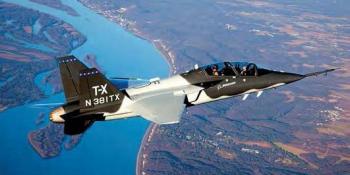The FY2018 omnibus appropriations bill, passed by Congress on March 21, 2018, and subsequently signed into law, added a total of 143 aircraft beyond those initially requested by America’s armed services in early 2017. It increased total aircraft procurement funding by $9.5 billion above the original request, to $44 billion.
Significant increases above the numbers originally requested were provided for F-35 Lightning IIs (46 to 56 F-35As, 20 to 24 F-35Bs and four to ten F-35Cs), 14 to 24 F/A-18 Super Hornets, 15 to 18 KC-46A Pegasus tankers, six to 14 V-22 Osprey tiltrotors, seven to ten P-8A Poseidon maritime surveillance aircraft, zero to two Gulfstream C-37Bs, and nine to 25 C-130J Hercules versions: six Air National Guard C-130J transports, four Marine KC-130J tankers, five Air Force Special Operations Command MC-130J Combat Shadow IIs and one Air Combat Command HC-130J Combat King II personnel recovery and tanker aircraft.
Helicopters added by the bill include, seven AH-1Z attack helicopters and two CH-53K King Stallions heavy lift helicopters for the US Marine Corps. The US Army is set to receive an additional 17 AH-64E Apache attack helicopters and 11 UH-72 Lakota training helicopters. The Army National Guard will receive an additional eight UH-60M Black Hawk utility helicopters.
UAVs added included increasing the Army’s MQ-1 Gray Eagle procurement from 11 to 20 air vehicles and increasing from zero to six MQ-8C Fire Scout UAVs for the US Navy.
Funding increases included an additional $103 million for rewinging A-10 Thunderbolt II attack aircraft. Munitions procurement funded at $16.2 billion, $1.9 billion above the original budget request, to build up stockpiles drawn down by the sustained operations over Iraq and Syria.
Congress explicitly kept in the bill the requested FY2018 funding for the E-8C Joint Standoff Target Attack Radar (JSTARS) recapitalisation programme. The selection of a potential replacement for the E-8C aircraft is likely to take place this year. Congress did not take this opportunity to block JSTARS’ retirement, starting in FY2019, but will have the ultimate decision over the Air Force’s current plan to replace the E-8C with a multidomain sensor network. David C Isby



